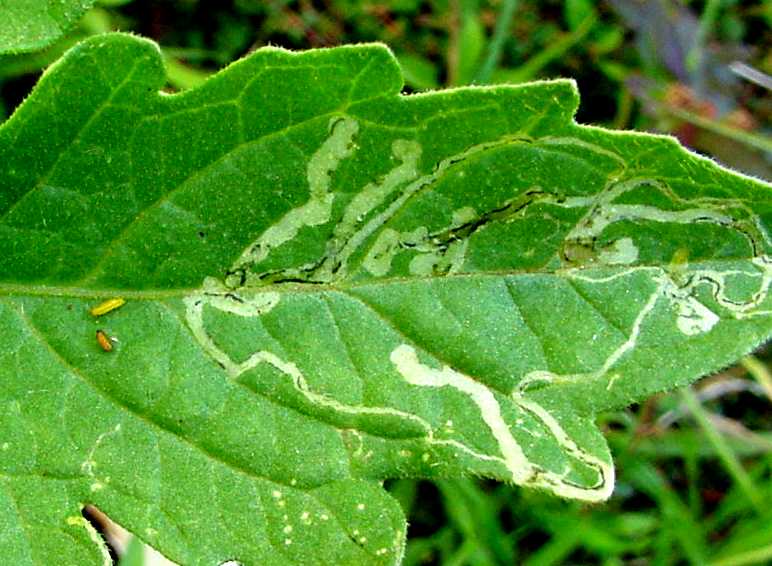
Minelayer
Liriomyza Spp.
Pathogen:
Insect
Type:
Risk:
INTERMEDIATE




DESCRIPTION
Pathogen description
Liriomyza spp., known as leafminer, is a genus of flies in the family Agromyzidae. They are small flies whose larvae mine the leaf tissue of host plants, including tomatoes. The life cycle of Liriomyza spp. It consists of four stages: egg, larva, pupa and adult. Adult females lay their eggs inside the leaf tissue of the plants. The larvae emerge from the eggs and feed on the internal tissue of the leaves, forming characteristic tunnels called mines. In the pupal stage, the larvae transform into adults inside the leaves and emerge to begin the cycle again.
Disease description
The disease caused by Liriomyza spp. In tomatoes it is mainly manifested by the formation of mines on the leaves. General symptoms include the presence of small yellow or white Taches on the leaves and the formation of tunnels or mines in the leaf tissue. The main symptoms are:
- Formation of mines on the leaves.
- Presence of yellow or white Taches on the leaves.
- Damage to leaf tissue, which can affect photosynthesis and plant growth.

TEMPERATURE AND HUMIDITY
20°C - 30°C
60% - 80%

VOIES DE TRANSMISSION
Direct contact, Wind, Mechanical transmission

Chemical treatments
CONTROL
• ABAMECTIN 0.0015% + PYRETHRINS 0.02% [AL] P/V
• ABAMECTIN 1.8% [EC] P/V
• AZADIRACTIN 1% (AS AZADIRACTIN A) [EC] P/V
• Azadirachtin 2.6% (AS AZADIRACTIN A) [EC] P/V
• CYANTRANILIPROL 10% + ACIBENZOLAR-S-METHYL 1.25% [SC] P/V
• CYANTRANILIPROL 20% [SC] P/V
• DELTAMETHRIN 2.5% [EC] P/V
• DELTAMETHRIN 2.5% [EW] P/V
• ADHESIVE TRAPS
Treatments authorized in organic farming
• AZADIRACTIN 1% (AS AZADIRACTIN A) [EC] P/V
• Azadirachtin 2.6% (AS AZADIRACTIN A) [EC] P/V
• ADHESIVE TRAPS
Biological control
• DACNUSA SIBIRICA (Parasitoid and predatory insects)
• HETERORHABDITIS BACTERIOPHORA (Parasitoid and predatory nematodes)
• STEINERNEMA CARPOCAPSAE (Parasitoid and predatory nematodes)
Preventive treatments
• ADHESIVE TRAPS
- Use anti-insect meshes in greenhouses and protected cultivation structures.
- Use chromatic traps to monitor the presence of adults of Liriomyza spp.
- Carry out pruning and elimination of affected leaves to reduce the larvae population.
- Apply specific phytosanitary treatments when necessary, following the recommendations for use and respecting the withdrawal periods.
- Implement cultural practices that improve ventilation and reduce humidity in the crop.
Recommendations
*The recommended treatments are recommendations based on the authorities' databases and do not replace in any way the guidelines established by the legislation of each country.





